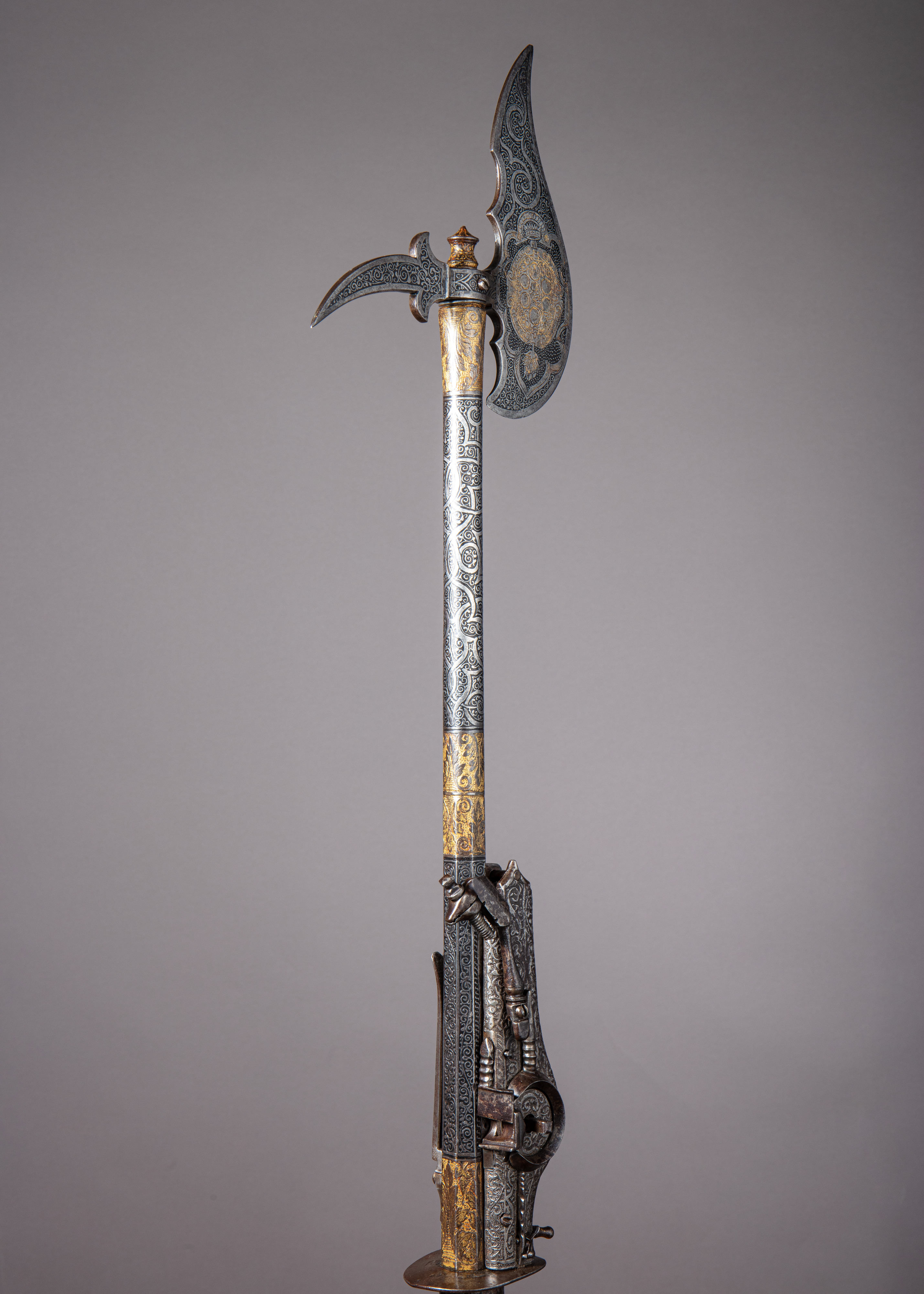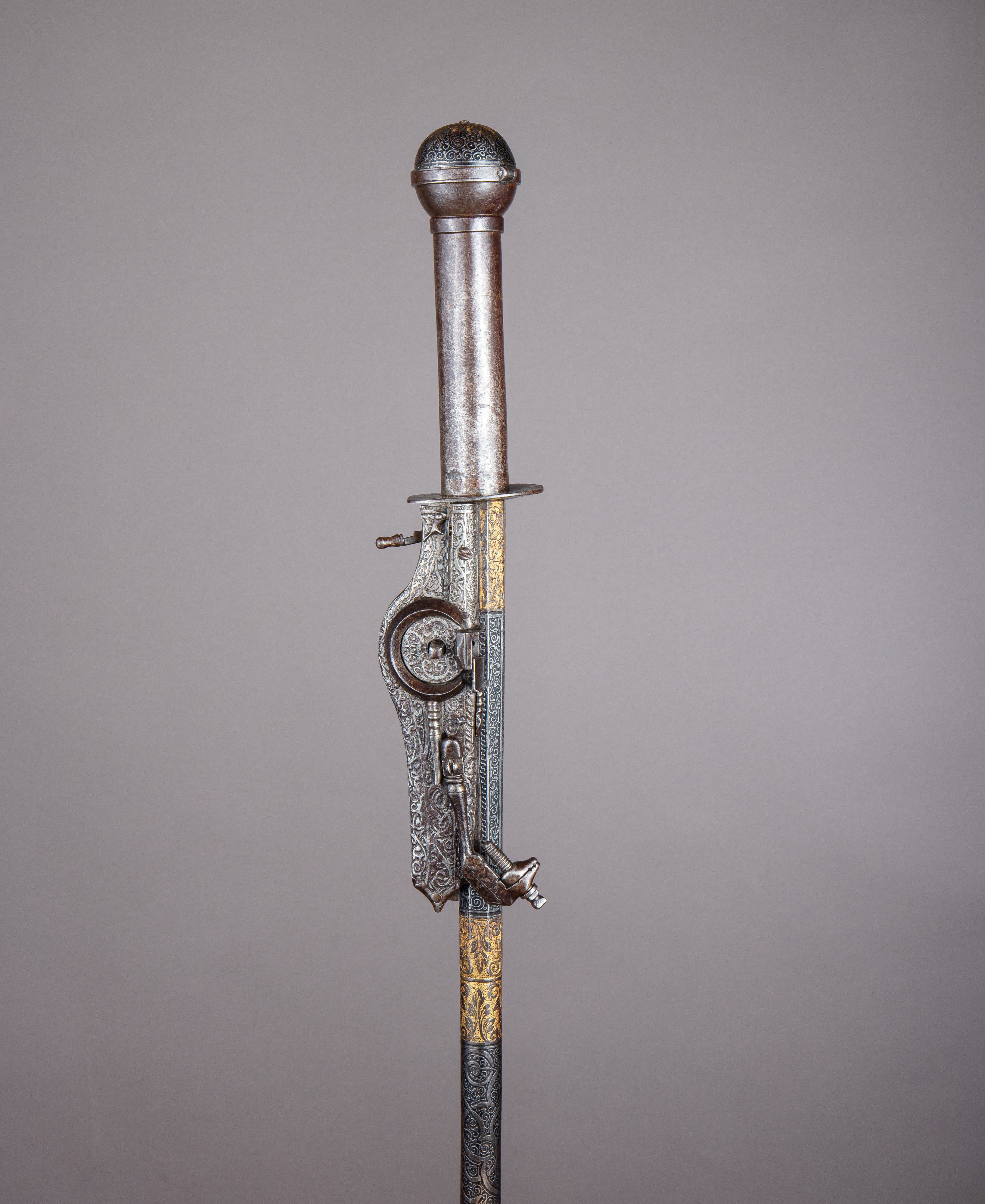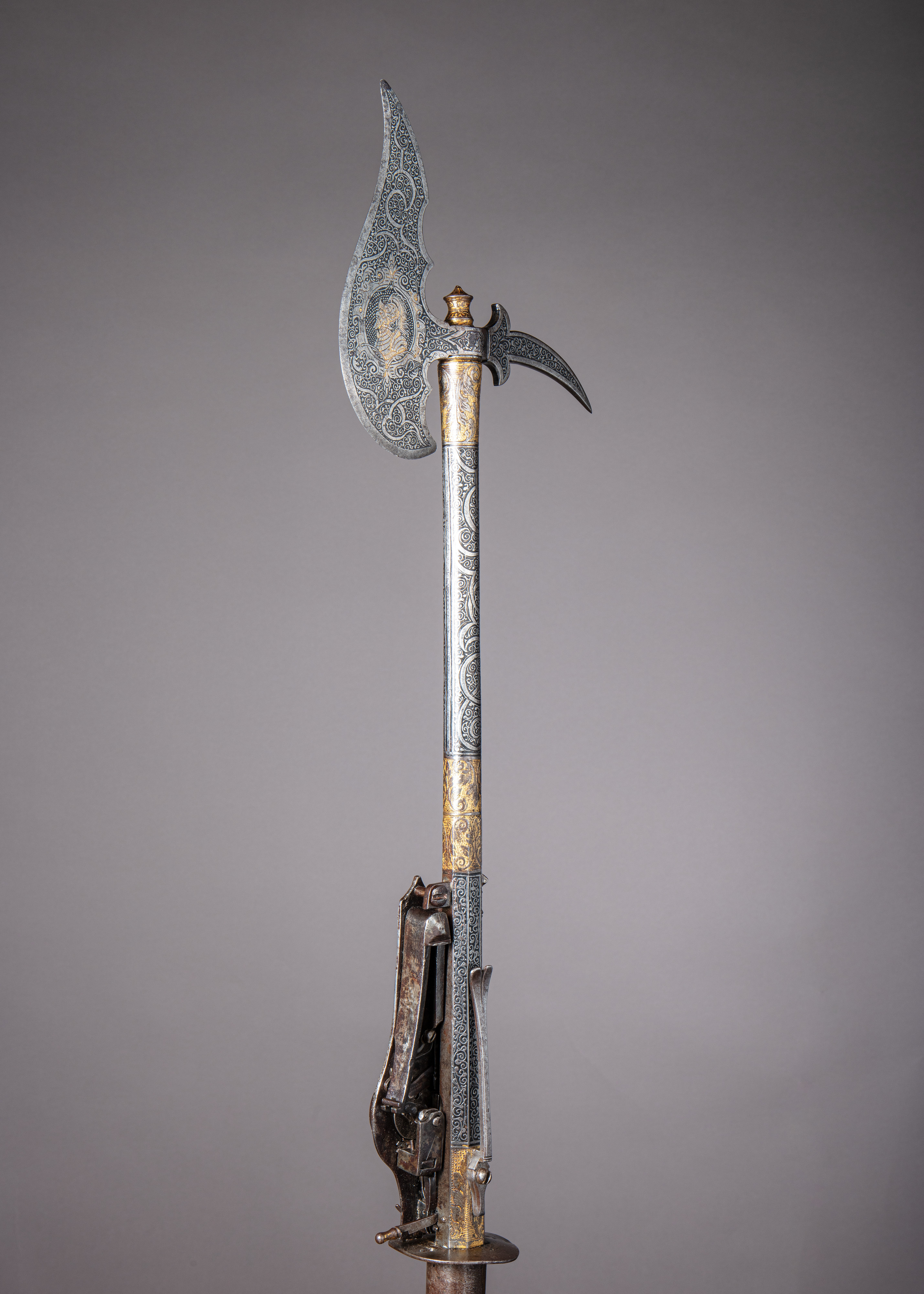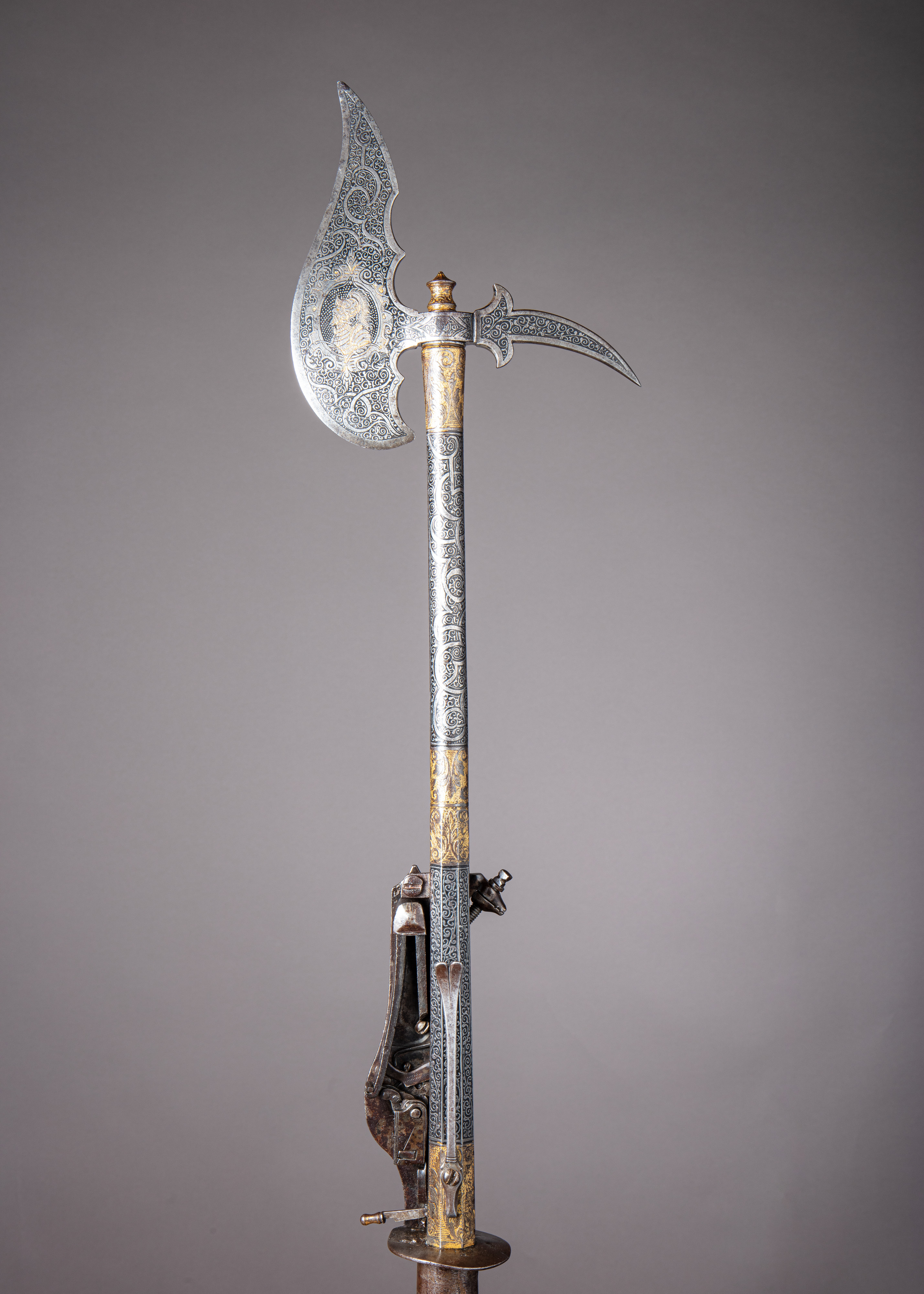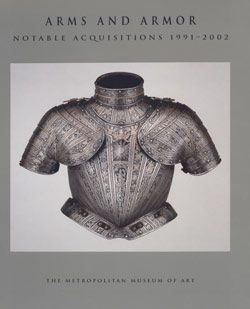Combination Ax-Pistol of Grand Duke Ferdinand I de' Medici (1549–1609)
The invention of the wheel lock in the early sixteenth century established a fairly reliable, if complex and expensive, firearms ignition system that engendered the rapid development of pistols and long arms for both warfare and the hunt. By the middle of the century a new genre of weapon developed, combining a wheel-lock pistol and a conventional sword, dagger, ax, or mace. This would seem to imply a basic insecurity on the part of the owner, suggesting that if his shot missed he could rely on the weapon's second function as a backup. In reality, however, combination weapons of this sort appealed to the wealthy nobleman as elaborate mechanical curiosities, and they are found in abundance in the princely armories and Renaissance Kunst- und Wunderkammern.
This ax-pistol, like most recorded examples, is of German manufacture and follows conventional all-steel construction in which the hollow shaft of the ax serves as the pistol barrel, with the lock (modern replacement) attached to the outer side; the shaft is pierced with a touchhole and fitted with a trigger. The grip, which is framed by a molding at either end, terminates in a hollow pommel formed of two hinged halves that probably served as a storage compartment for pyrites, wadding, bullets, or even ancillary tools. The forward end of the shaft is fitted with an S-shaped ax blade and a curved spike or fluke behind it; the barrel opening is closed with a baluster-shaped plug that would be removed before the pistol was fired. The surfaces of the ax, shaft, and bottom half of the pommel are etched with strapwork interlace and scrollwork on a blackened ground, highlighted by areas of gilt foliage, in the South German style employed in Augsburg and Nuremberg. Each face of the ax is etched in the center with a cartouche, that on the outer (lock) side encloses the Medici arms surmounted by a rayed crown (fig. 5), while that on the inner side encloses the profile head of a helmeted warrior.
The presence of the Medici arms indicates that this weapon was made after December 1569, when Cosimo I de' Medici (1519–1574, ruled from 1537) was elevated from duke of Florence to grand duke of Tuscany, and a new crown of rayed type was adopted. The owner of the weapon appears not to have been Cosimo himself but his second son, Cardinal Ferdinand (1549–1609), who ruled from 1587. The ax-pistol is first recorded in the Medici archives in 1589, when it was in Ferdinand's private armory (armeria secreta) in his residence at the Palazzo Pitti, Florence. There it was clearly described, including the grip, which is now plain, as having been covered in black velvet with fringe of black silk and gold. The entire weapon was stored in a case of black leather furnished with black velvet cords and tassels of black silk and gold.
Due to rights restrictions, this image cannot be enlarged, viewed at full screen, or downloaded.
This artwork is meant to be viewed from right to left. Scroll left to view more.


